Chart Color Schemes
est. as @ -- *
ABS ERP | -- people | --
2021 Census | -- people
Sales Activity
Curious about local property values? Filter the chart to assess the volume and appreciation (including resales) trends and regional comparisons, or scroll to the map below view this information at an individual property level.
Find a Recent Sale
Sales Detail
Population
Warnervale - Wadalba lies within the top 10% of areas nationally in terms of population growth performance according to AreaSearch analysis of short and medium-term trends
Warnervale-Wadalba's population is approximately 22,869 as of Aug 2025. This figure represents a growth of 2,818 people since the 2021 Census, which recorded a population of 20,051. The increase is inferred from ABS estimates: 22,353 in June 2024 and an additional 767 validated new addresses post-Census. This results in a density ratio of 533 persons per square kilometer. Warnervale-Wadalba's growth rate of 14.1% since the 2021 Census exceeds both its SA4 region (3.1%) and SA3 area, indicating it is a growth leader. Interstate migration contributed approximately 72.0% to this growth.
AreaSearch uses ABS/Geoscience Australia projections for each SA2 area released in 2024 with a base year of 2022. For areas not covered by this data, NSW State Government's SA2 level projections released in 2022 with a base year of 2021 are used. Growth rates by age group from these aggregations are applied to all areas for years 2032 to 2041. Future trends predict exceptional growth placing it in the top 10 percent nationally, with an expected expansion of 15,971 persons by 2041 based on latest numbers, reflecting a total increase of 67.6%.
Frequently Asked Questions - Population
Development
The level of residential development activity in Warnervale - Wadalba was found to be higher than 90% of real estate markets across the country
Warnervale-Wadalba averaged approximately 234 new dwelling approvals annually over the past five financial years, from FY21 to FY25. A total of 1,173 homes were approved during this period, with an additional 48 approvals recorded in FY26 up until now. On average, 3.4 people moved to the area each year for every dwelling built over these five financial years.
This significant demand outpaces supply, potentially exerting upward pressure on property prices and intensifying competition among buyers. The average construction cost value of new homes is $380,000, which is below regional levels, suggesting more affordable housing options for buyers in the area. In FY26 alone, commercial development approvals worth $160.2 million have been recorded, indicating robust local business investment. Compared to Greater Sydney, Warnervale-Wadalba has seen new home approvals that are 173.0% higher per capita, offering buyers a greater choice of housing options. This high level of activity reflects strong developer confidence in the area.
Recent construction trends show that 81.0% of approved dwellings are detached houses, with townhouses or apartments making up the remaining 19.0%. This maintains the area's traditional low-density character and focus on family homes appealing to those seeking more space. The current population density is approximately 87 people per dwelling approval, suggesting an expanding market. Looking ahead, Warnervale-Wadalba is projected to grow by 15,455 residents by 2041. If current development rates continue, housing supply may not keep pace with population growth, potentially increasing competition among buyers and supporting stronger price growth in the future.
Frequently Asked Questions - Development
Infrastructure
Warnervale - Wadalba has moderate levels of nearby infrastructure activity, ranking in the top 50% nationally
Area infrastructure changes significantly influence local performance. AreaSearch identified 37 projects potentially impacting the region. Notable projects are Cedarwood Estate, Yeramba Estates Central Coast Development, The Sanctuary Estate Hamlyn Terrace, and Hamlyn View Estate. Below details projects most relevant.
Professional plan users can use the search below to filter and access additional projects.
INFRASTRUCTURE SEARCH
 Denotes AI-based impression for illustrative purposes only, not to be taken as definitive under any circumstances. Please follow links and conduct other investigations from the project's source for actual imagery. Developers and project owners wishing us to use original imagery please Contact Us and we will do so.
Denotes AI-based impression for illustrative purposes only, not to be taken as definitive under any circumstances. Please follow links and conduct other investigations from the project's source for actual imagery. Developers and project owners wishing us to use original imagery please Contact Us and we will do so.
Frequently Asked Questions - Infrastructure
Central Coast Airport Precinct Development
The Central Coast Airport Precinct Development will upgrade the existing general aviation facility at Jack Grant Avenue, Warnervale into a regional general aviation, education and emergency services hub supported by commercial and aviation related ground leases. The adopted airport master plan and 2025 business case outline staged runway upgrades to Category 1B, new hangars and support infrastructure, land subdivision for aviation and business tenants, and an emergency operations centre for the Rural Fire Service and other agencies. Over time the precinct is intended to integrate with the Greater Warnervale structure plan, linking to surrounding business, education and town centre growth areas.

Yeramba Estates Central Coast Development
New estate development by Yeramba Estates, with over 60 years experience developing quality residential land estates. Located in convenient Central Coast location, halfway between Sydney and Newcastle, designed for modern living with community facilities.

Warnervale Town Centre - Woolworths Shopping Centre
Development of a neighbourhood shopping centre within the proposed Warnervale Town Centre as part of Parklands Central Coast master-planned community. Includes a Woolworths supermarket with Home Delivery, specialty retail uses, commercial uses, medical centre, pharmacy, and community facilities. The development is designed to serve the growing Warnervale community and support the planned population growth in the area.
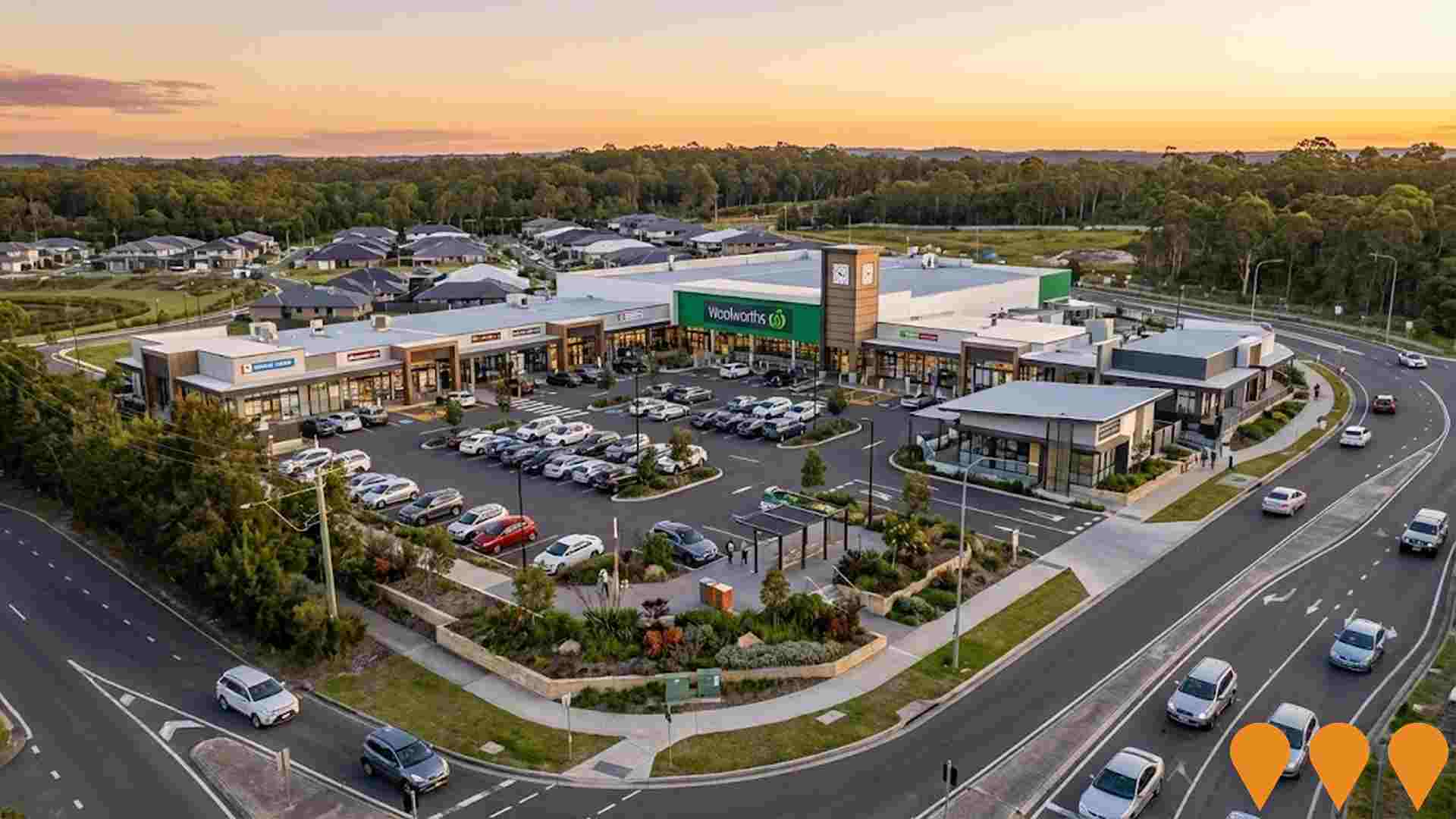
Warnervale Business Precinct
Council-led employment precinct within the Airport and Porters Creek Wetland landholdings, historically zoned for business park and education uses. In 2025 Council reports indicate the Master Plan/feasibility work is progressing with technical studies (heritage, CAD modelling, geotechnical) and subdivision steps to excise the precinct from broader lots. The precinct is intended to unlock serviced employment land for warehousing, logistics, manufacturing, offices and associated services to grow local jobs across Greater Warnervale.
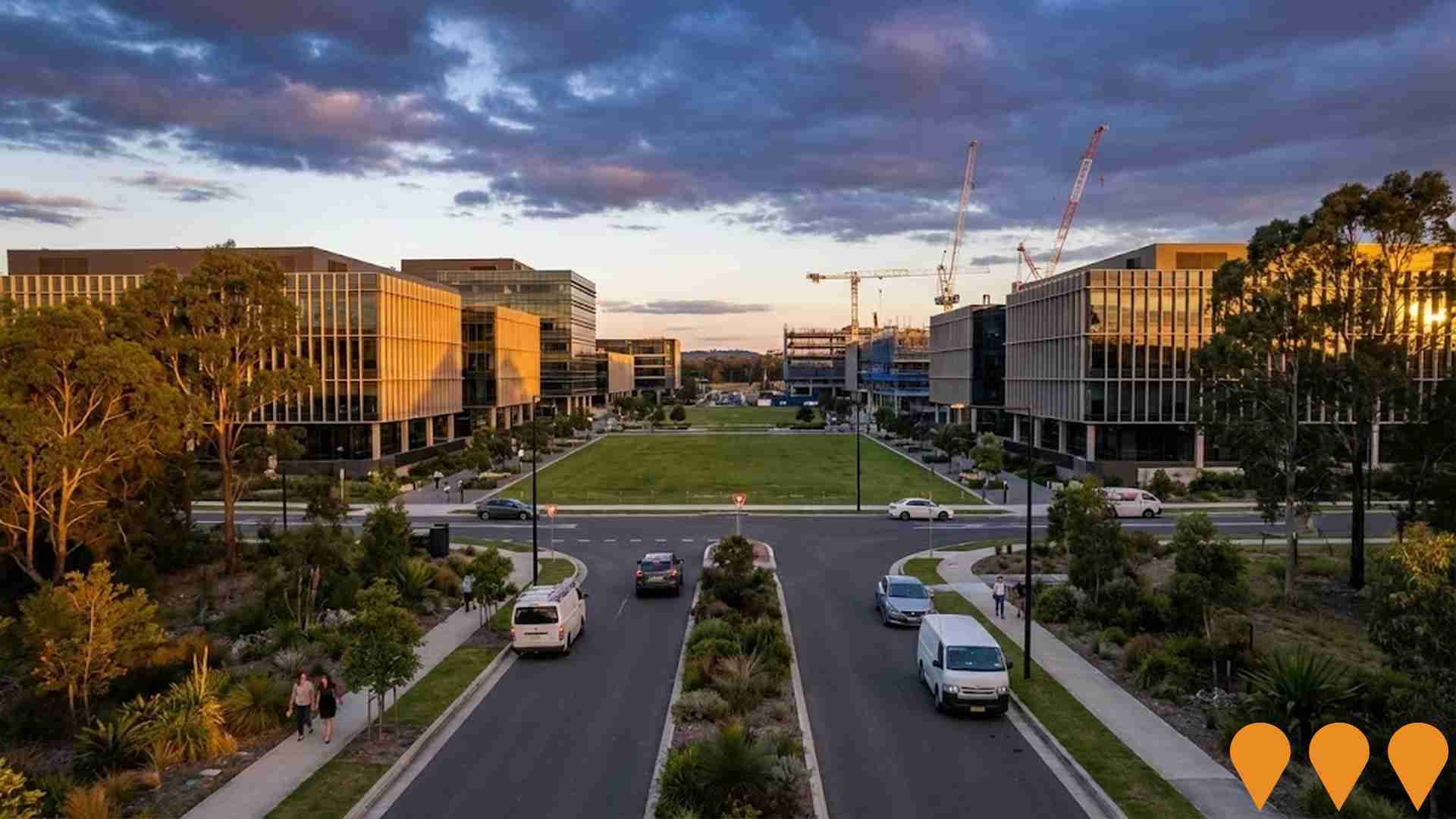
Woolworths Warnervale Distribution Centre Expansion
Expansion of the existing Woolworths Wyong (Warnervale) regional distribution centre, including extensions to temperature-controlled and ambient warehouses, additional banana ripening rooms, hardstand and parking upgrades. NSW Planning portal shows the SSD as More Information Required. A separate DA in 2025 proposes a battery energy storage system on-site. The 2024 EPBC decision reportedly found the previous expansion proposal clearly unacceptable due to impacts on a critically endangered orchid, indicating redesign or alternative pathways would be required before any approval.
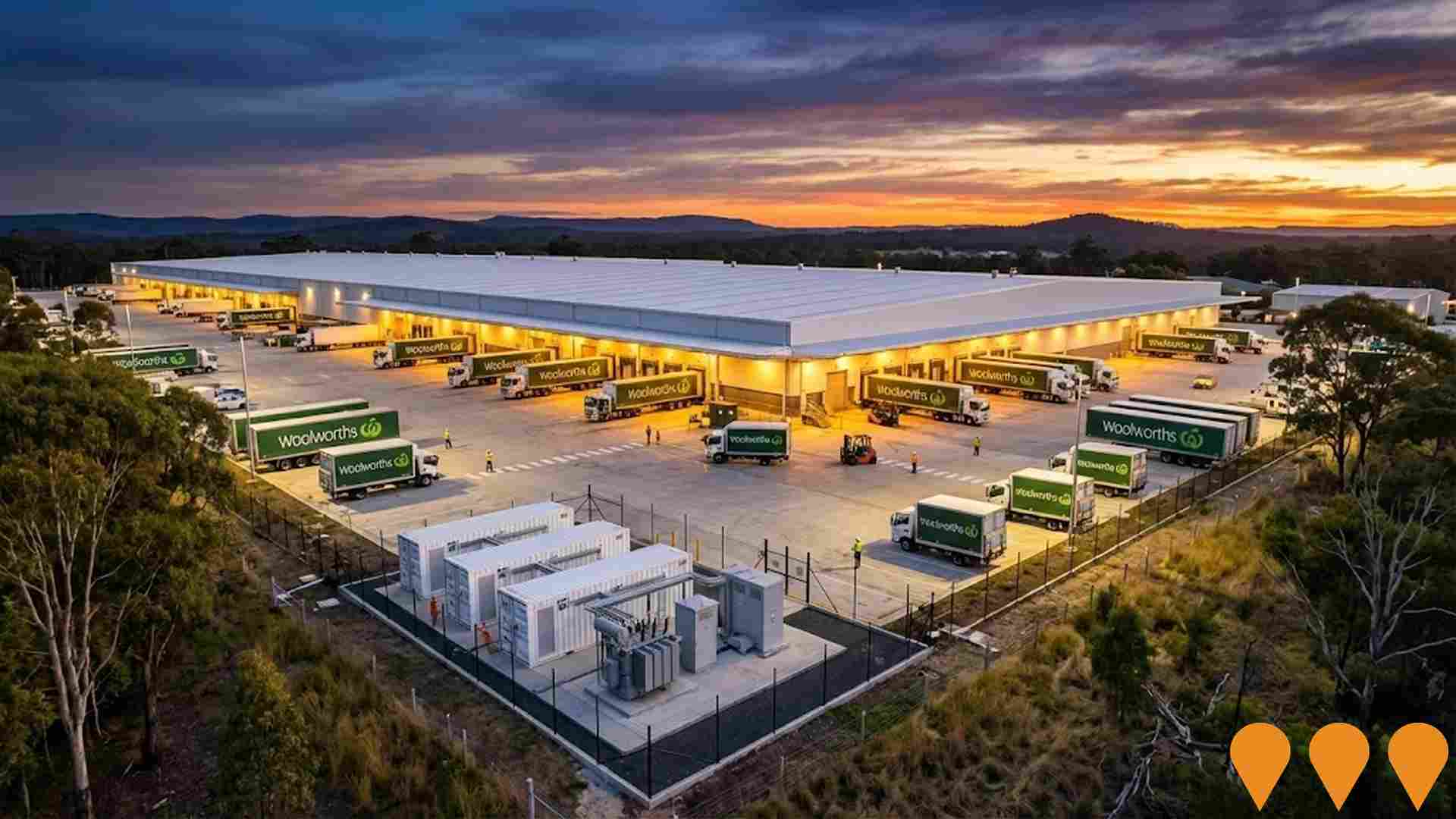
Hamlyn Terrace (Wyong) NSW Ambulance Station
New NSW Ambulance Station as part of the NSW Government's $132 million Rural Ambulance Infrastructure Reconfiguration (RAIR) Program. The program delivered 24 new or upgraded ambulance stations across NSW.

Cedarwood Estate
Master-planned residential community in Hamlyn Terrace, designed for families, couples, and seniors. The estate features quality investment properties and spacious homesites, fully serviced with underground power, sewerage, and NBN connectivity. Located near the Pacific Highway and M1 Motorway, it offers convenient access to Sydney and Newcastle.
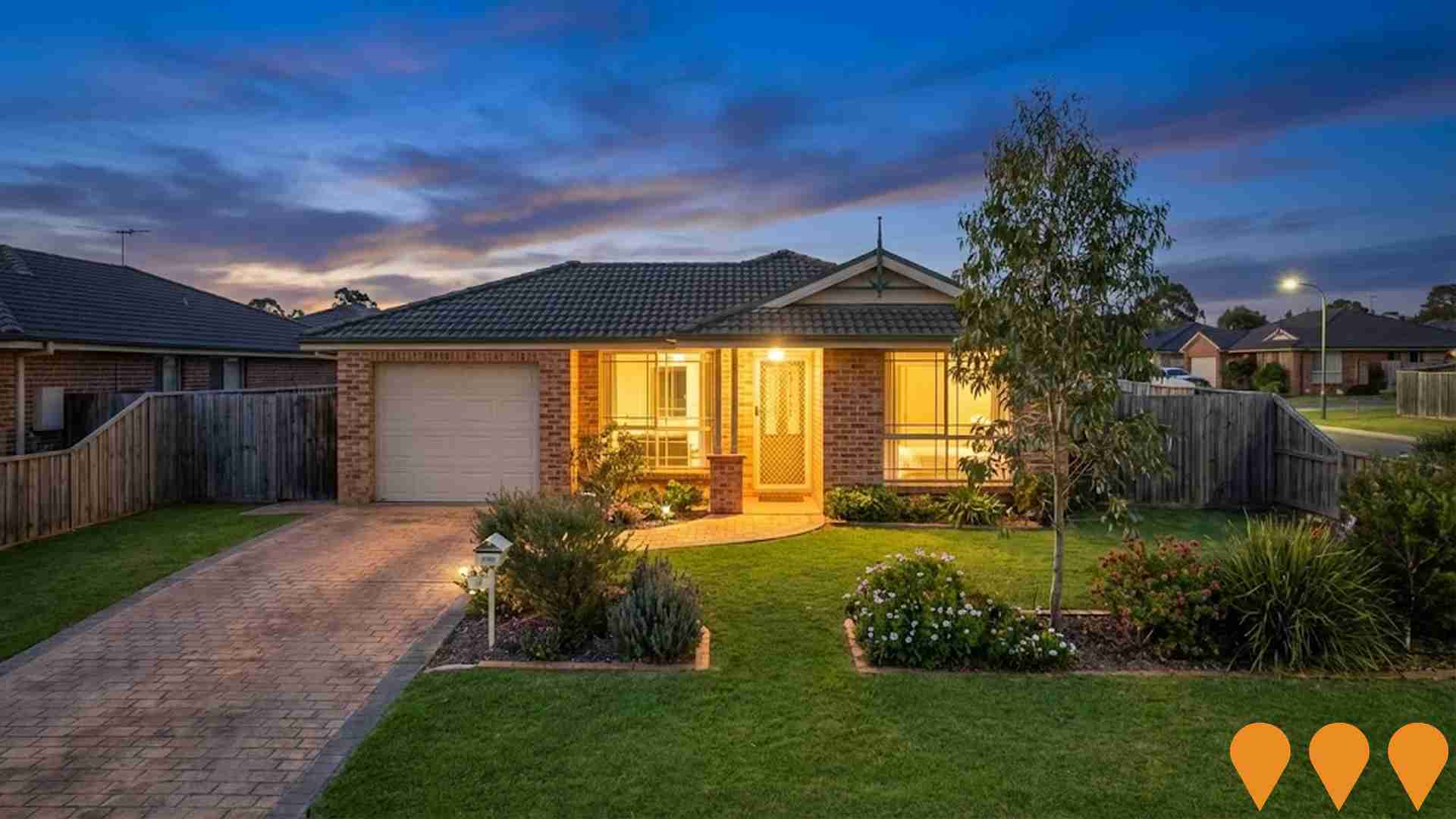
The Sanctuary Estate Hamlyn Terrace
The Sanctuary is a house and land estate in Hamlyn Terrace on the NSW Central Coast, offering registered residential lots for detached family homes in a quiet, family friendly area close to schools, Wyong Hospital, local shops and the M1 motorway.
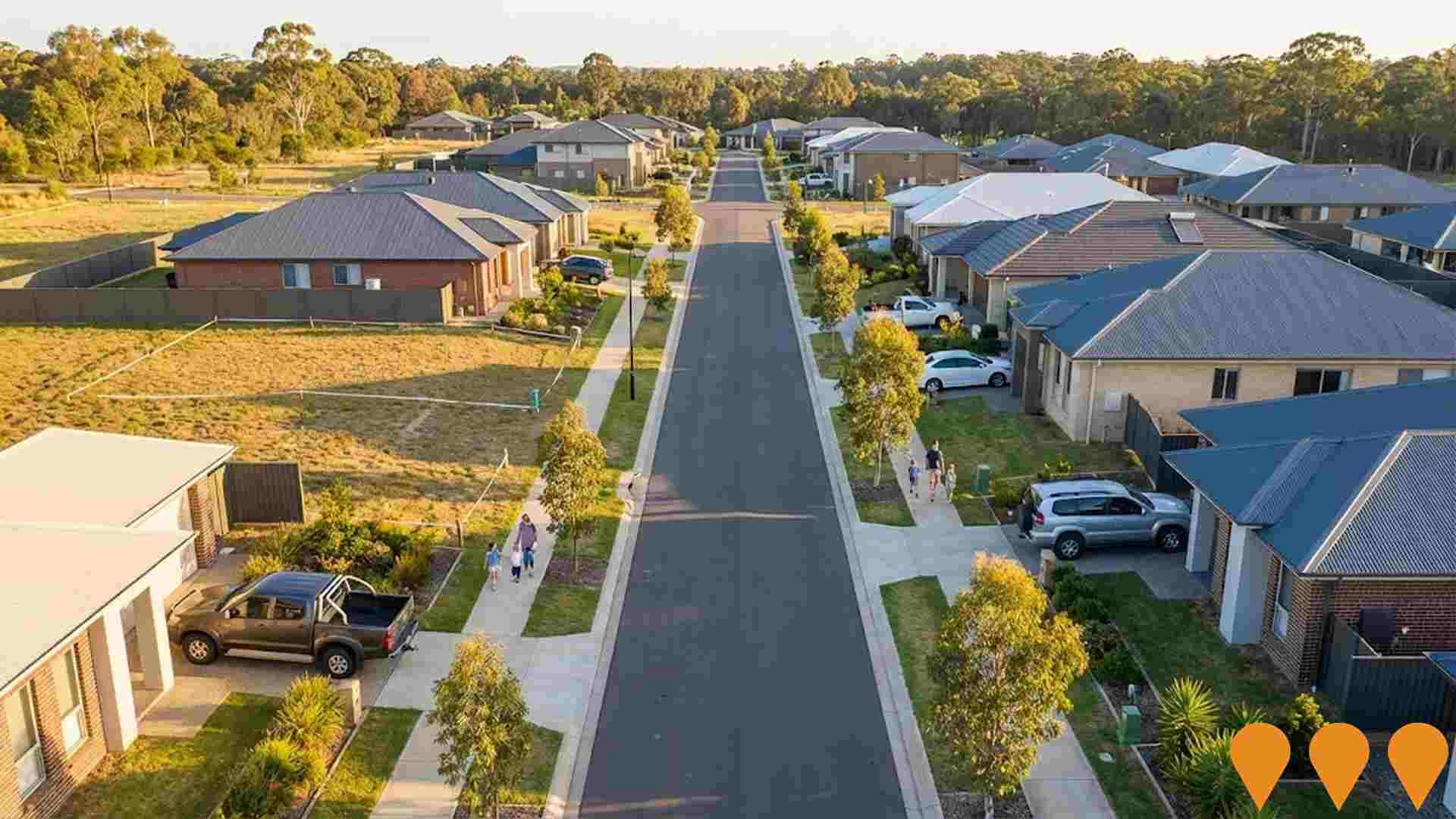
Employment
The employment environment in Warnervale - Wadalba shows above-average strength when compared nationally
Warnervale-Wadalba has a skilled workforce with significant representation in essential services sectors. The unemployment rate was 3.2% as of June 2025, lower than Greater Sydney's 4.2%.
Employment growth over the past year was estimated at 1.9%. There were 11,188 residents employed in June 2025 with a workforce participation rate of 63.1%, similar to Greater Sydney's 60.0%. Key employment industries include health care & social assistance, retail trade, and construction. Health care & social assistance is particularly notable, with employment levels at 1.4 times the regional average.
However, professional & technical services employ only 4.4% of local workers, below Greater Sydney's 11.5%. Employment opportunities may be limited locally, as indicated by Census data comparing working population to resident population. Between June 2024 and June 2025, employment increased by 1.9%, labour force grew by 2.7%, leading to an unemployment rate rise of 0.8 percentage points. In comparison, Greater Sydney recorded employment growth of 2.6%, labour force growth of 2.9%, with unemployment rising by 0.3 percentage points. Jobs and Skills Australia's national employment forecasts from May 2025 project national employment growth of 6.6% over five years and 13.7% over ten years, varying significantly between industry sectors. Applying these projections to Warnervale-Wadalba's employment mix suggests local growth of approximately 6.6%% over five years and 13.8% over ten years.
Frequently Asked Questions - Employment
Income
Income levels align closely with national averages, indicating typical economic conditions for Australian communities according to AreaSearch analysis
Warnervale-Wadalba had a median taxpayer income of $49,288 and an average of $59,885 in the 2022 financial year, according to AreaSearch's postcode level ATO data. This was lower than national averages, with Greater Sydney's median being $56,994 and average at $80,856. By September 2025, estimates suggest median income will be approximately $55,503 and average at $67,436, based on a 12.61% Wage Price Index growth since 2022. The 2021 Census data shows household income ranked at the 67th percentile ($2,022 weekly) and personal income at the 47th percentile. In this area, 38.0% of residents (8,690 people) fall into the $1,500 - $2,999 income bracket, similar to regional levels where 30.9% are in this bracket. High housing costs consume 18.4% of income, but strong earnings place disposable income at the 63rd percentile. The area's SEIFA income ranking places it in the 5th decile.
Frequently Asked Questions - Income
Housing
Warnervale - Wadalba is characterized by a predominantly suburban housing profile, with a higher proportion of rental properties than the broader region
In Warnervale-Wadalba, as per the latest Census, 94.4% of dwellings were houses, with 5.7% being semi-detached, apartments, or other types. This compares to Sydney metro's 83.2% houses and 16.7% other dwellings. Home ownership in Warnervale-Wadalba was 25.4%, with mortgaged dwellings at 42.6% and rented ones at 32.0%. The median monthly mortgage repayment was $2,167, higher than Sydney metro's average of $1,900. Median weekly rent in the area was $495, compared to Sydney metro's $385. Nationally, Warnervale-Wadalba's mortgage repayments were significantly higher than the Australian average of $1,863, and rents were substantially above the national figure of $375.
Frequently Asked Questions - Housing
Household Composition
Warnervale - Wadalba features high concentrations of family households, with a higher-than-average median household size
Family households account for 82.5% of all households, including 42.2% couples with children, 23.7% couples without children, and 15.7% single parent families. Non-family households make up the remaining 17.5%, with lone person households at 15.2% and group households comprising 2.3%. The median household size is 3.0 people, larger than the Greater Sydney average of 2.5.
Frequently Asked Questions - Households
Local Schools & Education
Educational attainment in Warnervale - Wadalba aligns closely with national averages, showing typical qualification patterns and performance metrics
The area has lower university qualification rates at 16.9%, compared to Greater Sydney's average of 38.0%. Bachelor degrees are the most common at 12.0%, followed by postgraduate qualifications (3.2%) and graduate diplomas (1.7%). Vocational credentials are prominent, with 42.8% of residents aged 15+ holding such qualifications - advanced diplomas at 12.0% and certificates at 30.8%. Educational participation is high at 34.1%, including 12.6% in primary education, 10.2% in secondary education, and 3.7% pursuing tertiary education.
Six schools operate within Warnervale - Wadalba, educating approximately 4,986 students, with typical Australian school conditions (ICSEA: 1002) and balanced educational opportunities. The schools include three primary and three K-12 institutions. The area serves as an education hub with 21.8 school places per 100 residents, significantly above the regional average of 13.6, attracting students from surrounding communities.
Frequently Asked Questions - Education
Schools Detail
Nearby Services & Amenities
Transport
Transport servicing is moderate compared to other areas nationally based on assessment of service frequency, route connectivity and accessibility
Warnervale - Wadalba has 161 active public transport stops operating within its area. These stops offer a mix of train and bus services, totaling 97 individual routes that provide 2,761 weekly passenger trips combined. The accessibility to these transport options is rated as excellent, with residents typically living just 196 meters away from the nearest stop on average.
The service frequency across all routes averages 394 trips per day, which equates to approximately 17 weekly trips per individual stop.
Frequently Asked Questions - Transport
Transport Stops Detail
Health
Health performance in Warnervale - Wadalba is lower than average with common health conditions somewhat prevalent across the board, though to a considerably higher degree among older age cohorts
Warnervale - Wadalba faces significant health challenges with common health conditions prevalent across all age groups but notably higher among older cohorts. Approximately half of the total population (~11,320 people) has private health cover, compared to the national average of 55.3%.
Mental health issues and asthma are the most common medical conditions in the area, affecting 10.0% and 8.6% of residents respectively. A higher proportion of residents (66.3%) report being free from medical ailments compared to Greater Sydney (61.5%). The area has a lower percentage of seniors aged 65 and over at 14.1% (3,226 people) compared to Greater Sydney's 22.3%. However, health outcomes among seniors require more attention than the broader population.
Frequently Asked Questions - Health
Cultural Diversity
In terms of cultural diversity, Warnervale - Wadalba records figures broadly comparable to the national average, as found in AreaSearch's assessment of a number of language and cultural background related metrics
Warnervale-Wadalba's cultural diversity aligns with the wider region, with 82.3% born in Australia, 89.8% being citizens, and 89.2% speaking English only at home. Christianity is the dominant religion, comprising 57.6%, compared to 56.2% across Greater Sydney. The top three ancestry groups are Australian (29.6%), English (28.9%), and Irish (6.6%).
Notably, Maltese (1.2%) and Australian Aboriginal (4.6%) populations are higher than regional averages of 1.0% and 4.5%, respectively. Maori representation is also slightly higher at 0.7%.
Frequently Asked Questions - Diversity
Age
Warnervale - Wadalba's population is younger than the national pattern
Warnervale-Wadalba's median age of 35 years is slightly younger than Greater Sydney's 37 and the national average of 38 years. The 5-14 age group constitutes 15.7%, compared to Greater Sydney. The 25-34 cohort makes up 12.1%. Between 2021 and present, the 15-24 age group has increased from 13.6% to 14.5%. Conversely, the 5-14 cohort has decreased from 16.4% to 15.7%. By 2041, population forecasts indicate substantial changes in Warnervale-Wadalba's demographics. The 45-54 age group is projected to rise significantly, with an increase of 2,597 people (86%), from 3,025 to 5,623.




